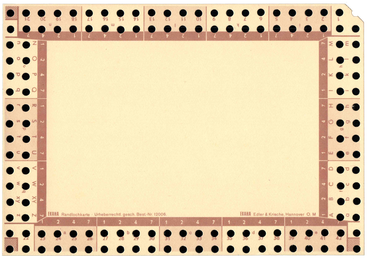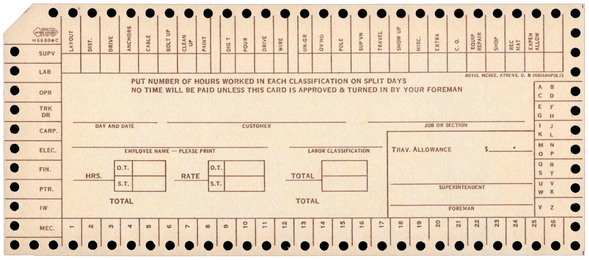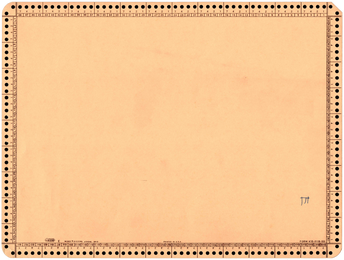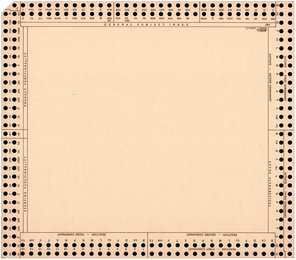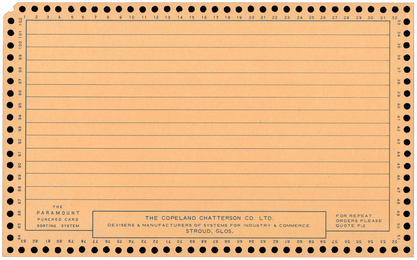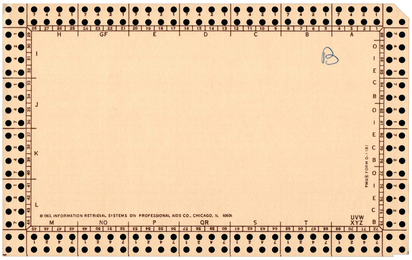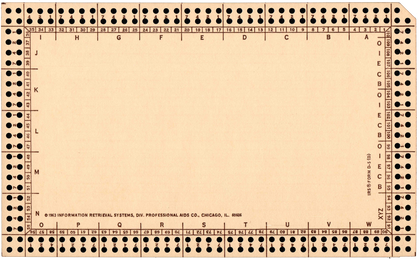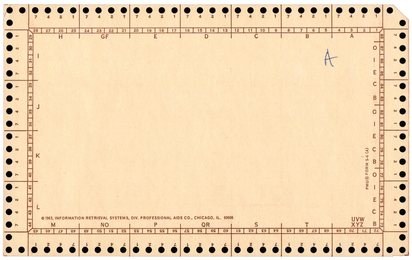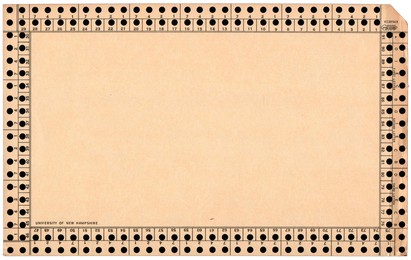Edge-notched cards are a type of punch card that uses hand-punched notches on the edge of the card to represent data. They were used for sorting and organising information in military and scientific institutions along with many museums and libraries throughout the early 20th century until such systems were supplanted by computers. Edge-notched cards came in a variety of sizes and formats, including some with two levels of notches.
Cards would be notched according to a consistent encoding system for all an institutions cards, corresponding hole numbers with certain binary properties of the card’s data or using a super-imposed coding system.
Cards could then be searched by determining the holes corresponding to a desired search property and passing a rod, often called a ’needle’ (because of their similarity to knitting needles), through the card stack then lifting unpunched cards away, leaving only the cards with a notched edge in that location. In some specific applications vibrating machines were employed to shake matching cards loose from a suspended stack of cards through which rods had been threaded.
